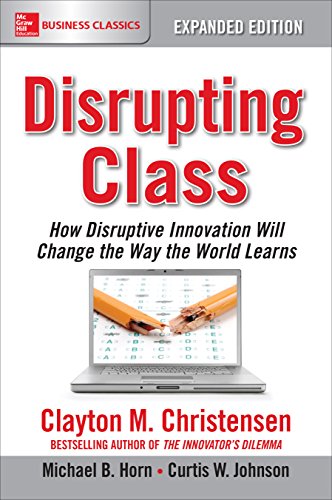Disrupting Class, Expanded Edition: How Disruptive Innovation Will Change the Way the World Learns Link to heading
Summary Link to heading
“Disrupting Class” explores how disruptive innovation—originally a business concept introduced by Clayton M. Christensen—can be applied to the education sector to improve learning outcomes. The book discusses how traditional educational systems are often resistant to change and frequently fail to meet the diverse learning needs of students. The authors argue for a shift towards student-centric learning, facilitated through technology and innovative teaching methods that cater to individual learning styles. They propose a model of personalized learning, driven by advancements in educational technologies and online learning platforms, which can enable more effective and equitable education.
Review Link to heading
The book has been praised for its insightful application of business innovation theory to education, offering a fresh perspective on how to tackle systemic issues within the educational sector. It provides a comprehensive analysis of the challenges facing schools and outlines a clear, strategic framework for embracing innovation. However, some critics have pointed out that the book’s focus on technological solutions may overlook important socio-economic factors and the complexity of educational reform. Nevertheless, the book’s influence has been significant in sparking discussions and initiatives around the integration of technology in education.
Key Takeaways Link to heading
- Disruptive Innovation in Education: The book proposes that educational systems need to embrace disruptive technologies to better serve diverse student needs.
- Student-Centric Learning: Emphasizes the importance of personalized learning strategies and how they can increase student engagement and achievement.
- Role of Technology: Highlights how technology can facilitate adaptive learning and provide access to a broader range of educational resources.
- Systemic Challenges: Discusses the structural barriers within the education system that hinder innovation and how these can be addressed.
- Future of Education: Imagines a future where learning is more customized, accessible, and efficient through innovative practices.
Recommendation Link to heading
“Disrupting Class” is a valuable read for educators, policymakers, and administrators interested in education reform and innovation. Those involved in curriculum development or educational technology will particularly benefit from the authors’ insights into how to leverage technology to foster more effective learning environments. It also serves as a thought-provoking resource for anyone interested in understanding the broader implications of disruptive innovation beyond its business origins.
